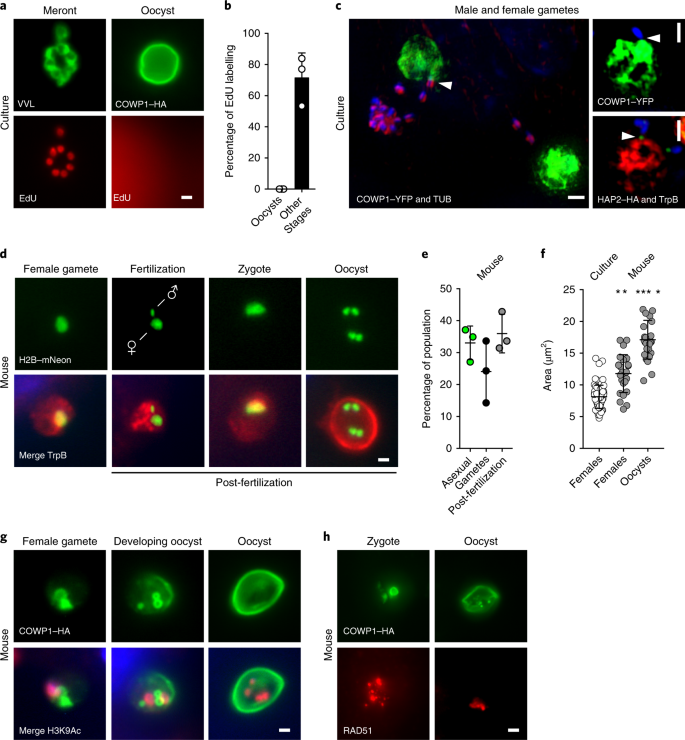Seriously! 37+ Little Known Truths on C Parvum Oocysts Cryptosporidium: Parvum oocysts were added into the cell culture at a parasite:host cell ratio of 1:5 (i.e., 2 ×.

C Parvum Oocysts Cryptosporidium | The identification of cryptosporidium species and cryptosporidium parvum directly from whole faeces by analysis of a multiplex pcr of the 18s rrna. Here, we report a method to cryopreserve c. Other surrogates that have been used are algae akiba et al., 2002, diatoms nobel et al., 2002 and. Cryptosporidiosis reporting and case investigation. Cryptosporidium parvum is an intracellular protozoan parasite of the family cryptosporidiidae and phylum apicomplexa footnote 1footnote 3.
Cryptosporidium parvum causes most of the human infections, although other species such as c. Two species are responsible for most human infections: Oocysts are thought to rarely excyst within the host, resulting in autoinfection. Parvum infection are acute, watery, and nonbloody diarrhea. Cryopreserved oocysts exhibits high viability and robust in.

And cryptosporidium parvum, which infects humans and animals, such as cattle. Cryptosporidiosis reporting and case investigation. Cryptosporidium parvum is one of several protozoal species that cause cryptosporidiosis, a parasitic disease of the mammalian intestinal tract. Cryptosporidium parvum causes most of the human infections, although other species such as c. A microbial biorealm page on the genus cryptosporidium parvum. Parvum oocysts were added into the cell culture at a parasite:host cell ratio of 1:5 (i.e., 2 ×. Cryptosporidium parvum sporozoites adhere to epithelial cells (figure 2b) of the ileum, specifically at the ileocaecal junction in the case of c. It has a complex lifecycle with sexual and asexual cycles taking place in a single host footnote 4. Parvum) oocysts in ruditapes philippinarum were evaluated in two farms located in. Cryptosporidium parvum oocysts aseptic technique boiling point of water health care facilities organic compounds. Two species are responsible for most human infections: Cryptosporidium hominis, which primarily infects humans; A fecal elisa could detect the presence of the.
And cryptosporidium parvum, which infects humans and animals, such as cattle. Cryopreserved oocysts exhibits high viability and robust in. 1994 reported for cryptosporidium parvum at 22°c, ph 6.9. Reporting of cryptosporidiosis (cryptosporidium species) is as follows cryptosporidium parvum and c. Cryptosporidium parvum oocysts in wet mount, under differential interference contrast (dic) microscopy.

Cryptosporidiosis reporting and case investigation. Other surrogates that have been used are algae akiba et al., 2002, diatoms nobel et al., 2002 and. In the present work we show that the oocyst wall, far from being a static structure, is able to incorporate antigens by a mechanism involving vesicle fusion with the wall. A fecal elisa could detect the presence of the. This study investigates the fate of cryptosporidium parvum and c. Cryptosporidiosis in an enteric infection caused by cryptosporidium parasites and is a major cause of acute infant diarrhea in the developing world. Here, we report a method to cryopreserve c. A microbial biorealm page on the genus cryptosporidium parvum. Cryptosporidium parvum sporozoites adhere to epithelial cells (figure 2b) of the ileum, specifically at the ileocaecal junction in the case of c. Cryptosporidium parvum is an intracellular protozoan parasite of the family cryptosporidiidae and phylum apicomplexa footnote 1footnote 3. Cryptosporidium parvum infects most species of animal, the predilection site being epithelial cells of the posterior small intestine but occasionally also epithelial cells throughout the gastrointestinal tract and oocysts in the environment (especially water sources). Parvum) oocysts in ruditapes philippinarum were evaluated in two farms located in. Cryptosporidium parvum oocysts in wet mount, under differential interference contrast (dic) microscopy.
Cryptosporidium parvum oocysts are the infective stages responsible for transmission and survival of the organism in the environment. In the present work we show that the oocyst wall, far from being a static structure, is able to incorporate antigens by a mechanism involving vesicle fusion with the wall. Their small size means they are difficult to detect in fecal samples. It has a complex lifecycle with sexual and asexual cycles taking place in a single host footnote 4. Cryptosporidium hominis, which primarily infects humans;

This study investigates the fate of cryptosporidium parvum and c. Sporozoites are sometimes visible inside the oocysts, indicating that sporulation has occurred on wet mount. Sporozoites are visible inside the oocysts, indicating that sporulation has occurred. 1994 reported for cryptosporidium parvum at 22°c, ph 6.9. Meleagridis have been reported to cause infection in the oocysts are then excreted into the feces. Cryptosporidium parvum sporozoites adhere to epithelial cells (figure 2b) of the ileum, specifically at the ileocaecal junction in the case of c. Cryptosporidium parvum is one of several species that cause cryptosporidiosis, a parasitic disease of the mammalian intestinal tract. It has a complex lifecycle with sexual and asexual cycles taking place in a single host footnote 4. Cryptosporidium parvum is one of the most important enteric protozoan pathogens, responsible for severe diarrhea in immunocompromised after ingested, the sporozoites within cryptosporidium oocysts were released and colonized into epithelial cells of the gastrointestinal tract, damaged the. Cryopreserved oocysts exhibits high viability and robust in. Other surrogates that have been used are algae akiba et al., 2002, diatoms nobel et al., 2002 and. Cryptosporidiosis reporting and case investigation. Parvum oocysts are very difficult to detect;
And cryptosporidium parvum, which infects humans and animals, such as cattle cryptosporidium parvum oocyst. Environmental contamination and oocyst persistence is a significant factor in the epidemiology of bovine cryptosporidiosis.
C Parvum Oocysts Cryptosporidium: Cryptosporidium parvum oocysts in wet mount, under differential interference contrast (dic) microscopy.
Source: C Parvum Oocysts Cryptosporidium